Moses in the Cradle, commonly referred to as Tradescantia spathacea, is a popular indoor plant renowned for its strikingly beautiful, two-tone foliage. The unusual combination of green on above and purple below makes it an attractive add-on to any interior or exterior garden. This plant is admired not only for its decorative appeal, it is easy to maintain and propagate. In this guide, we’ll tell you everything you need to know about caring for the Cradle Moses plant, as well as how to successfully propagate it for even more enjoyment of its foliage.
About Moses-in-the-Cradle
Moses-in-the-Cradle, a member of the Commelinaceae family, is native to the tropical regions of Central America and Mexico. It is a low-growing perennial plant that thrives in warm temperatures and high humidity environments. The plant is named for its unique leaf structure, where the base of the leaf forms a sheath resembling a cradle. Little white blossoms bloom in this bassinet, which, when viewed from a distance, appear as if a baby Moses is resting in a cradle. While the visual appeal of Moses-in-the-Cradle undoubtedly adds a dash of aesthetic charm to any setting, it is also famous for its cleansing qualities, making it a valuable addition to both homes and workplaces.[1]
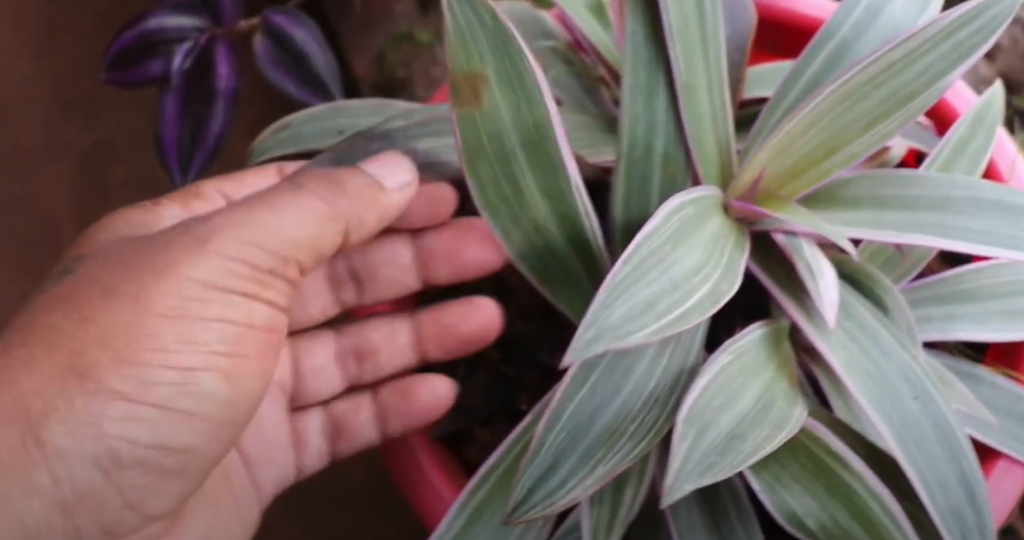
Moses-in-the-Cradle Features
The plant “Moses in the cradle” is famous for its captivating rosette formation and bi-colored, sword-shaped leaves, which present a stunning green top and a rich purple underside. The leaves reach anywhere from 6 to 12 inch in length, with margins that are smooth and even. These beautiful leaves wrap around the stem, creating the ‘cradle’ for which the plant is named. This plant produces small, boat-shaped white flowers nestled within the cradle of leaves, which further enhances its visual appeal. The flowers are typically in bloom during the warmer months of the year. Moreover, this plant is considered a type of succulent due to its ability to retain water within its thick leaves, making it fairly drought-resistant and suitable for low-moisture environments.[1]
Growing
Growing Moses-in-the-Cradle is fairly straightforward due to its hardy nature and minimal care requirements. It prefers bright indirect light, but can also carry a certain amount of shade. When it comes to watering, this plant likes to have its soil kept slightly moist. It’s important, however, not to overwater as still water can cause the roots to rot. Feeding with a well-balanced wet bulk fertilizer monthly during the growth period can help maintain plant health and vibrancy. Moses-in-the-Cradle performs best in a well-drained soil mixture. Indoor plants can benefit significantly from being placed in a location with high humidity, like a bathroom. If you are growing it outdoors, it grows well in USDA frost zones 9 to 11. Remember that this plant is tropical by nature, so it needs protection from frost and extremely cold conditions.[1]
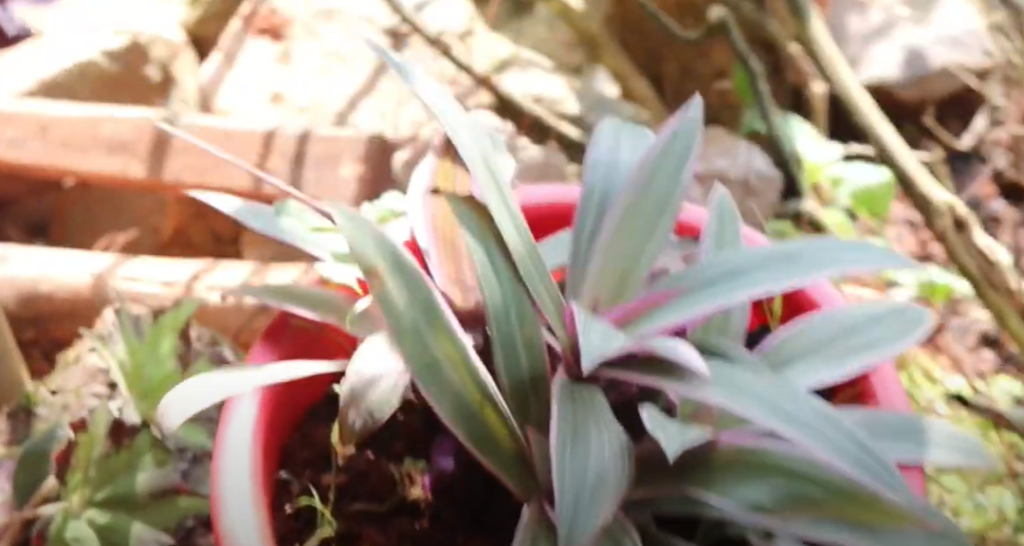
Requirements
When it comes to the requirements for growing a Moses-in-the-Cradle flower, consider the following key points. It thrives best in well-drained soil and needs bright indirect light for best results. However, it also can carry a certain level of shade. The soil should be kept slightly moist, but avoid overwatering to protect against root rot. A monthly feed with a balanced liquid fertilizer is beneficial throughout the vegetation period. High humidity conditions are preferable for indoor plants, so consider placing them in bathrooms or using a humidifier. For outdoor locations, they develop better in USDA hardiness zones 9 – 11, and it’s important to shield them from frost and extreme cold conditions as the plant is originally of tropical nature.[2]
Pruning
Pruning is a crucial aspect of maintaining the health and the emergence of your plant Moses in the Cradle. Regular pruning helps maintain the plant’s shape, encourages denser growth, and can prevent diseases from spreading. Ideally, pruning is done in early spring or mid-summer, during the active growth period. Make sure to sterilize your pruning shears to avoid transmitting diseases to the plant. Focus on removing dead, yellowing, or damaged leaves at their base. Also, cut back any leggy growth to encourage the plant to develop a more compact, bushier form. Remember to handle the leaves gently during pruning to avoid damaging the plant. With a little attention and care, your Moses-in-the-Cradle will reward you with a lush, vibrant display of foliage.[2]
Watering
Moses-in-the-Cradle plants, scientifically known as Rhoeo spathacea, thrive in moist but not overly saturated soil. It is important to ensure proper watering practices to maintain their health and vitality. When watering, it is recommended to thoroughly saturate the soil, allowing excess water to drip off the bottom of the pan. This ensures that the roots are adequately hydrated while preventing waterlogging, which can lead to root rot and other fungal diseases.
To maintain a balanced moisture level, it is crucial to allow the top inch of soil to dry out between watering sessions. This allows the plant’s roots to breathe and helps prevent the onset of moisture-related issues. During the winter or in cooler conditions, the plant enters a dormant phase and requires less moisture. Therefore, it is advised to reduce the frequency of watering during this period.
Considering the specific needs of Moses-in-the-Cradle plants, it is important to check the humidity levels in the environment, especially for indoor plants. This species thrives in high humidity, so it is beneficial to maintain optimal moisture levels around the plant. If necessary, using a humidifier or regularly misting the plant with water can help create a favorable humidity level.
By following these guidelines and providing the right amount of moisture, you can ensure the overall health and well-being of your Moses-in-the-Cradle plant.[2]
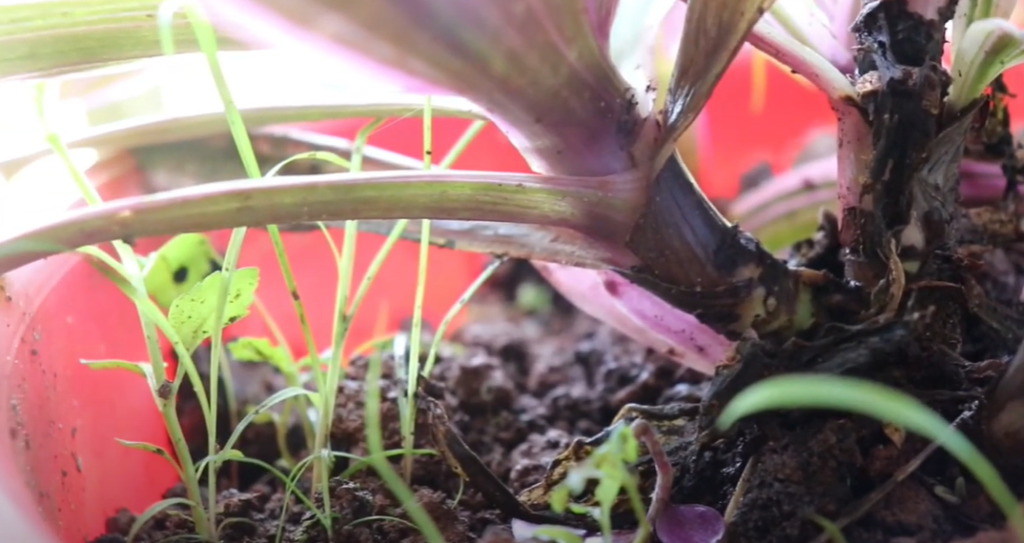
Propagating
Propagating a Moses-in-the-Cradle plant is relatively easy and can be done through two primary methods – division and stem cuttings.
Division
This method involves physically separating the plant into two or more segments, each with its own root system. During repotting, gently remove the plant from its pot and carefully divide the root ball into two or more sections, ensuring that each new plant has a good amount of roots and leaves. This process helps to establish individual plants that can thrive independently. Replant each division in a separate pot filled with well-draining soil, making sure to position them at the same depth as they were before. Lightly water the soil to ensure proper hydration and support initial growth.
Stem Cuttings
Another way to propagate Moses-in-the-Cradle is through stem cuttings. Begin by selecting a healthy stem with several leaves. Using a clean, sharp pair of scissors or pruning shears, make a clean cut just below a leaf node, which is where new roots will emerge. Allow the cutting to dry for a day or two, which helps the cut end callous over and reduces the risk of rot. Then, prepare a pot with well-draining soil and create a small hole using your finger or a pencil. Gently insert the cutting into the hole, ensuring that the leaf node is buried in the soil and the rest of the stem is above the surface. Lightly water the soil to provide moisture and create a favorable environment for root development. To maintain the necessary humidity, cover the pot with a clear plastic bag or use a mini greenhouse. Place the pot in a warm and bright location, but avoid direct sunlight. Over the course of a few weeks, new roots should begin to form, indicating successful propagation.
With either method, it is important to be patient as propagation can take time. Providing consistent care and attention to the new plants will help them establish strong root systems and develop into mature Moses-in-the-Cradle plants. Soon enough, you will have a collection of beautiful and thriving plants to enjoy or share with others, adding a touch of natural beauty to any space.[2]
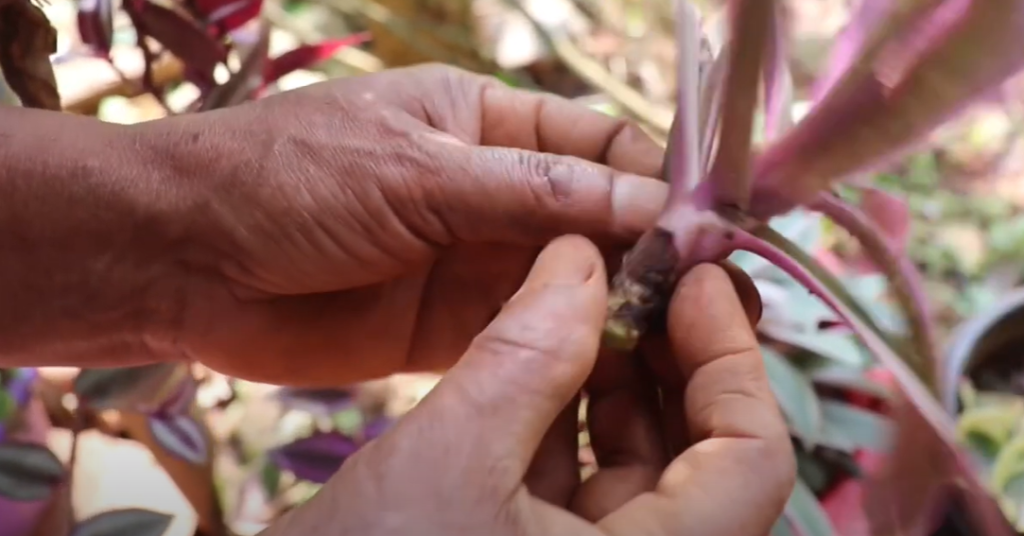
FAQ
What is the best way to propagate Moses in the cradle?
When it comes to propagating a Moses-in-the-Cradle plant, there are a few options to consider based on personal preference and convenience. Two common and successful methods are division and stem cuttings.
For beginners, propagation by division may be the easiest approach. This method involves separating the plant into two or more segments, each with its own root system and leaves. One advantage of division is that it typically requires less waiting time for root growth, allowing you to see new plants sooner.
On the other hand, propagation through stem cuttings can be a more rewarding experience. With this method, you can witness the development of new roots and leaves from a single stem cutting. It can be exciting to observe the growth and transformation of a single cutting into a thriving plant.
Regardless of the method you choose, patience is key. Providing the right care and environment will eventually result in the successful growth of new Moses-in-the-Cradle plants in your space. So take your time, enjoy the process, and soon you’ll be surrounded by flourishing greenery.
Can I propagate Moses in the cradle?
Certainly! Propagating Moses in the Cradle is a fascinating and rewarding process that allows you to expand your plant collection. There are two primary methods you can choose from: division and stem cuttings.
The method of division entails carefully separating the plant into two or more sections, each with its own root system. This technique is particularly suitable for mature plants that have developed a substantial root network. By dividing the plant, you can create multiple new Moses in the Cradle plants, ensuring a bountiful display of vibrant foliage in your garden or indoor space.
On the other hand, propagation through stem cuttings offers an exciting opportunity to witness the transformation of a single stem into a thriving plant. To propagate using this method, you will need to select a healthy stem from the parent plant and carefully cut it at a suitable length. By providing the stem with the right conditions and proper care, you can encourage it to develop roots and leaves, eventually becoming an independent plant.

Both division and stem cuttings have proven to be successful techniques for propagating Moses in the Cradle. The choice between the two methods ultimately depends on your comfort level and the resources available to you. It’s important to note that propagation can take time, and patience is key. By providing the appropriate care, such as the right amount of light, water, and nutrients, you can ensure that your new Moses in the Cradle plants thrive and flourish in their new environment.
So, whether you’re an experienced gardener looking to expand your collection or a plant enthusiast eager to try your hand at propagation, exploring the world of Moses in the Cradle propagation is a journey filled with excitement and fulfillment. Enjoy the process and watch as your efforts transform into beautiful and thriving plants!
How do you propagate Tradescantia Spathacea?
Tradescantia Spathacea, commonly known as the Moses-in-the-Cradle plant, can be propagated using two primary methods – stem cuttings and division.
Stem Cuttings
To propagate Tradescantia Spathacea using stem cuttings, start by selecting a healthy stem with several leaves. Make a clean cut just below a leaf node, which is the point where new roots will form. Allowing the cut end to dry for a day or two allows it to develop a callous, which helps prevent rotting.
Next, prepare a pot with a well-draining soil mix. Ensure that the leaf node is positioned beneath the soil surface and gently cover it. Lightly water the soil, making sure not to overwater. To create a favorable environment for rooting, maintain a warm and humid atmosphere, such as by using a plastic bag or a propagator. Within a few weeks, you should start to see the development of new roots, indicating successful propagation and the birth of a new plant.
Division
Division is another effective method for propagating Tradescantia Spathacea. During repotting, carefully remove the plant from its pot and gently divide the root ball into two or more segments. Each division should have an adequate number of roots and leaves to support its growth.
After dividing, prepare individual pots with well-draining soil and place each division into its own pot. Ensure that the roots are properly covered with soil and give them a light watering. As with stem cuttings, provide a warm and humid environment to encourage root development.
Remember, patience is crucial when propagating plants, as it can take some time to see results. With proper care, attention, and the ideal growing conditions, your new Tradescantia Spathacea plants will thrive and add beauty to your collection.
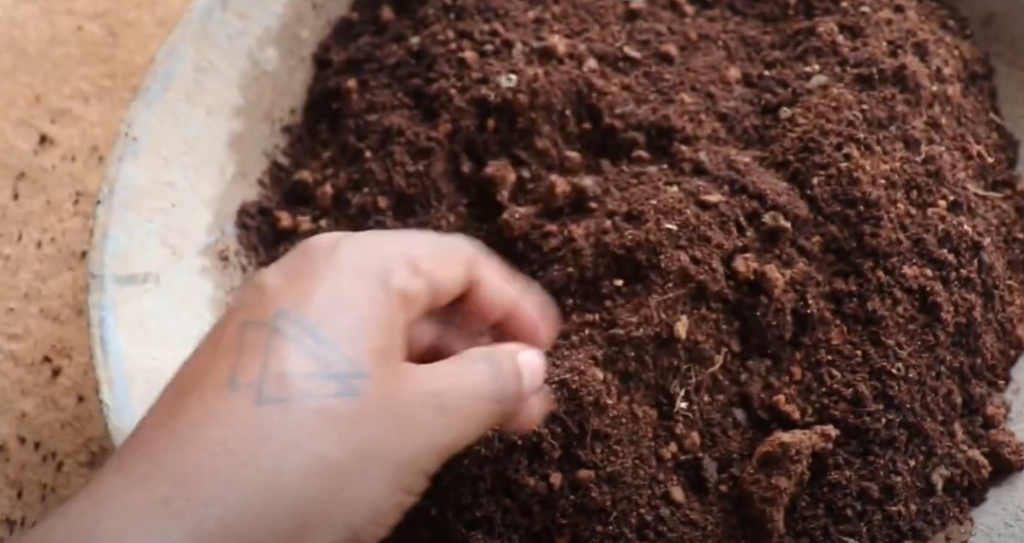
What is the importance of Moses in the cradle?
The Moses-in-the-Cradle plant, scientifically known as the Tradescantia Spathacea, holds significant importance in both ecological and aesthetic contexts. Ecologically, this remarkable plant serves as a vital habitat for a variety of small insects, thus promoting biodiversity in its surroundings. Its lush foliage provides shelter and sustenance for these tiny creatures, fostering a delicate balance within the ecosystem.
Furthermore, the Moses-in-the-Cradle has been revered for centuries for its purported healing properties in traditional medicine. The leaves are believed to possess medicinal qualities that can alleviate certain ailments and promote overall well-being. This long-standing reputation has made it a plant of great cultural significance in various societies.
Aesthetically, the Moses-in-the-Cradle is a beloved houseplant for many reasons. Its vibrant green and purple foliage adds a striking pop of color to any indoor or outdoor space, creating a visually captivating display that instantly uplifts the ambiance. Its unique coloration and distinctive leaf shape make it a standout among other houseplants, captivating the attention of admirers.
Moreover, the Moses-in-the-Cradle’s easy propagation and adaptability to varying conditions make it an ideal choice for both novice and experienced gardeners. Its ability to thrive in different environments, ranging from bright and sunny areas to shady corners, makes it a versatile and resilient plant. This adaptability, combined with its low-maintenance nature, brings joy to gardeners of all skill levels.
In addition to its aesthetic appeal and cultural significance, the Moses-in-the-Cradle is also known for its beneficial impact on indoor air quality. Like other plants, it has the ability to purify the air by absorbing harmful toxins and releasing fresh oxygen, creating a healthier and more invigorating environment.
In summary, the Moses-in-the-Cradle is a fascinating plant that encompasses ecological significance, cultural heritage, visual beauty, and health benefits. Its role as a habitat for insects, its traditional medicinal uses, its vibrant foliage, adaptability to various conditions, and its air-purifying qualities all contribute to its popularity among nature enthusiasts and plant lovers alike.
What are the side effects of Moses-in-the-Cradle?
While the Moses-in-the-Cradle plant is generally safe and non-toxic, it’s important to note that it can cause minor irritations in some cases. If ingested, the plant can cause discomfort or irritation to the mouth, lips, or throat, which may result in temporary symptoms such as mild salivation, vomiting, or diarrhea. Therefore, it’s advisable to keep the plant out of reach from pets as they might be tempted to chew on its leaves.
Furthermore, it’s worth mentioning that the plant’s sap can also cause skin irritation or a rash in some people, especially those with sensitive skin or plant allergies. Taking proper precautions, such as wearing gloves while handling or pruning the plant, can help prevent any potential skin reactions, particularly if you have a known sensitivity.
Despite these potential side effects, it’s important to highlight that the Moses-in-the-Cradle plant remains a popular and attractive option for both indoor and outdoor plant collections. With its unique foliage and vibrant colors, it adds a touch of beauty and elegance to any space. By being aware of these considerations and taking appropriate measures, you can enjoy the presence of this stunning plant while ensuring the well-being of both your family and your beloved pets.
What is special about Moses?
The Moses-in-the-Cradle plant, scientifically known as Tradescantia Spathacea, is truly a remarkable and fascinating plant in many aspects. Firstly, its foliage is a sight to behold with its striking dual-colored leaves – vibrant green on the upper side and a mesmerizing shade of purple underneath. This unique coloration instantly sets it apart from other plants, making it a standout addition to any plant collection.
Not only is the Moses-in-the-Cradle visually captivating, but it also boasts effortless propagation and care requirements, making it an ideal choice for both novice and experienced plant enthusiasts alike. Its ability to thrive and flourish under various conditions further adds to its appeal and popularity.
Apart from its visual and horticultural attributes, this plant holds ecological significance as well. By providing habitat for small insects, it actively contributes to the overall biodiversity of an area, fostering a balanced and thriving ecosystem. Traditionally, it has also been used in medicinal practices, believed to possess healing properties that have been valued for generations.
One of the most intriguing features of the Moses-in-the-Cradle plant is its ability to improve indoor air quality. As it gracefully adorns indoor spaces, it also acts as a natural air purifier, effectively removing harmful toxins and pollutants from the surrounding environment. This dual functionality makes it not only aesthetically pleasing but also beneficial for one’s health and well-being.
Lastly, the name of this enchanting plant originates from the boat-like shape of its bracts, which delicately cradle the small, white flowers. This distinctive characteristic adds a touch of historical intrigue, reminiscent of biblical times, enhancing the plant’s overall charm and allure.
Considering all these remarkable attributes, it is evident that the Moses-in-the-Cradle plant is more than just a plant – it is a truly special and captivating addition to any garden or home. Its unique combination of visual appeal, ease of care, ecological significance, medicinal value, air-purifying qualities, and historical charm make it an exceptional choice for plant enthusiasts seeking a plant that offers both beauty and substance.
Useful Video: Moses in the cradle plant care and propagation
Conclusion
In conclusion, the Moses-in-the-Cradle plant, scientifically known as Tradescantia Spathacea, is a truly extraordinary addition to any plant collection. Its remarkable dual-colored foliage, with vibrant shades of green and purple, creates a stunning visual appeal that is sure to captivate the eye. Not only is its appearance striking, but the plant also offers a multitude of benefits that make it an ideal choice for both novice and experienced gardeners alike.
When it comes to propagation, the Moses-in-the-Cradle plant offers simplicity and ease. With its ability to quickly produce offsets, or “babies,” it provides an exciting opportunity for gardeners to expand their plant collection through a simple and enjoyable propagation project. Additionally, this plant requires minimal maintenance, making it perfect for those who may not have a green thumb or are looking for a low-maintenance option.
While it is essential to handle the Moses-in-the-Cradle plant with care due to the potential minor irritations it can cause, proper precautions and care can mitigate any risks. With attention to its specific needs and guidelines, this beloved plant can thrive in both indoor and outdoor spaces, bringing a touch of natural beauty to any environment.
Beyond its aesthetic appeal and ease of care, the Moses-in-the-Cradle plant offers ecological contributions and traditional medicinal uses that add to its overall charm. As a houseplant, it has been shown to improve indoor air quality by filtering and purifying the surrounding air, creating a healthier and more pleasant living space. Additionally, this plant has a long history of traditional medicinal uses in various cultures, further highlighting its value beyond its visual appeal.
Whether you are looking to diversify your garden, enhance your indoor air quality, or embark on an exciting propagation project, the Moses-in-the-Cradle plant proves to be an exceptional choice. Its unique combination of stunning aesthetics, easy propagation methods, low-maintenance care requirements, and additional ecological and medicinal benefits make it a remarkable and versatile plant that is sure to bring joy and fascination to any plant enthusiast.
References:
- https://www.plantcarefully.com/moses-in-the-cradle/
- https://leafyplace.com/moses-in-cradle-plant/



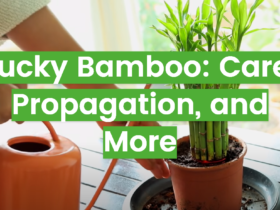
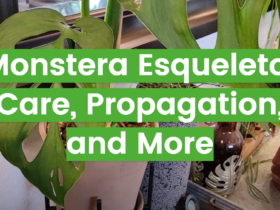
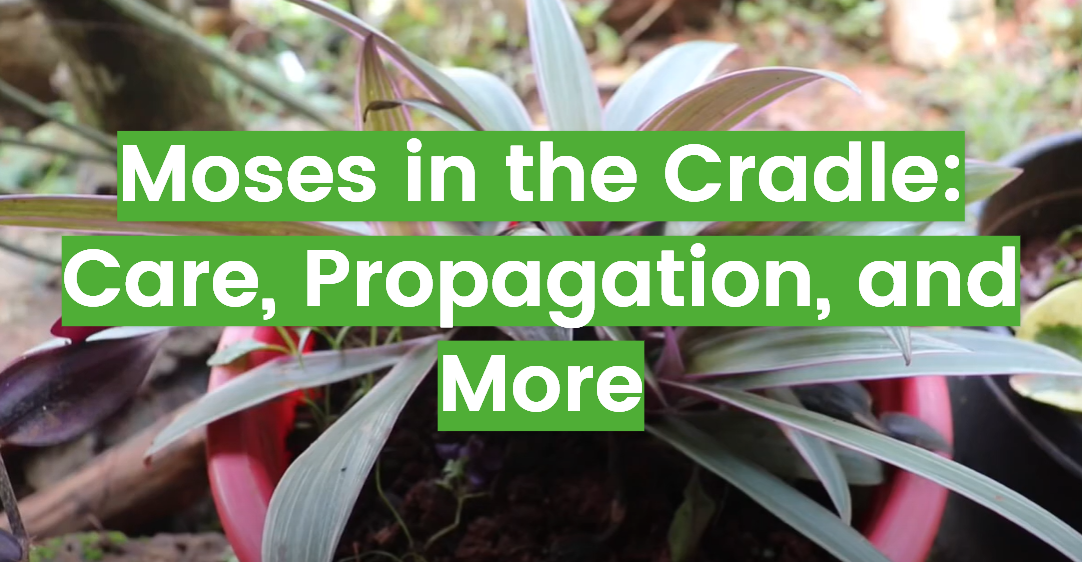

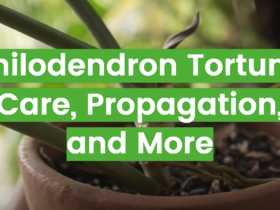

Leave a Review